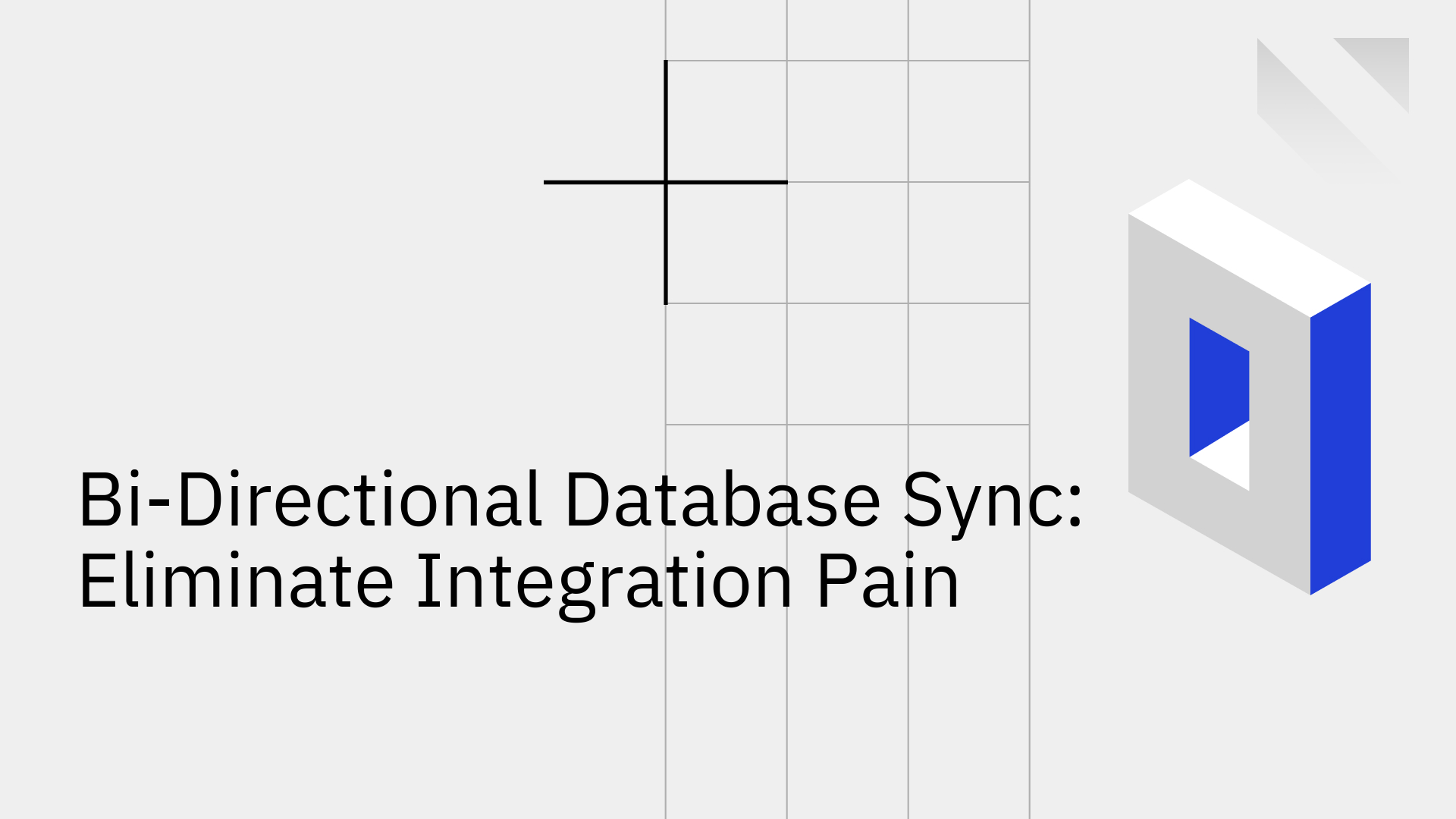
In modern business, data is often trapped in specialized applications. Your CRM, ERP, and production databases operate as independent silos, creating operational friction and data inconsistencies.
Keeping this data aligned is a persistent challenge for engineering and operations teams, leading to manual work and brittle, custom-coded solutions. Bi-directional database synchronization offers a modern, robust solution to this integration pain, enabling seamless, real-time data flow between all your critical systems.
Bi-directional sync, also known as two-way sync, is a process that maintains a state of mutual consistency between two or more databases or applications [3]. When data is added, updated, or deleted in one system, the change is automatically and instantly reflected in the other connected systems, and vice versa.
This creates a single, unified view of your data across the entire organization. For a detailed exploration of this concept, see our Bi-directional Sync: An Overview.
Unlike bi-directional sync, unidirectional (one-way) sync moves data from a designated "source of truth" to a destination, but not the other way around. While this approach has its uses for simple reporting or creating backups, it creates significant problems when multiple teams or systems need to edit the same data.
Any changes made in the destination system are ignored and overwritten, making it unsuitable for collaborative, operational workflows [6].
Attempting to solve data consistency challenges with outdated methods introduces significant technical and operational problems that undermine efficiency and reliability.
A robust bi-directional database synchronization platform is more than just a data pipe; it requires a sophisticated architecture to function reliably at scale. You can learn more in The Complete Guide to Two Way Sync.
For mission-critical operations, data must sync in milliseconds to support real-time workflows. However, a powerful sync solution also provides the flexibility to configure custom frequencies (e.g., every five minutes) to align with specific business needs and respect the API rate limits of your various applications.
A sync conflict occurs when the same record is modified in both connected systems simultaneously. Without a clear strategy, this can lead to data corruption. A reliable platform must have a clear method to resolve these conflicts automatically—such as "last update wins" or advanced custom rules—to ensure data integrity at all times.
"Silent failures," where syncs fail without notification, can lead to catastrophic data inconsistencies. Essential features for preventing this include a dedicated issue management dashboard, real-time alerts (via Slack, email, or PagerDuty), and single-click options to retry or revert failed synchronizations, giving you complete visibility and control.
Systems rarely share identical data schemas. A sync solution must be able to map fields between different systems, even if they have different names or formats (e.g., 'Contact_ID' vs. 'contactId'). Crucially, this must include support for both standard and custom objects and fields to handle the complexity of enterprise platforms like Salesforce or NetSuite [2].
Bi-directional sync eliminates integration pain across various industries and teams. Stacksync is purpose-built to power these critical use cases with unmatched reliability and performance.
Imagine a sales team closing a deal in Salesforce (CRM) while the finance team manages billing in NetSuite (ERP). With bi-directional sync, the moment a deal is marked "Closed-Won," an invoice is automatically generated in NetSuite. If the finance team updates the customer's billing address in NetSuite, that change is instantly reflected in Salesforce, ensuring both teams have consistent, up-to-date information.
A customer support team using an internal admin panel needs to update a user's subscription details. Instead of granting them risky, direct access to the production database, a two-way sync between the admin panel and the database (e.g., PostgreSQL or MySQL) ensures their changes are saved correctly and securely. The data remains consistent without exposing critical infrastructure.
To keep marketing and sales teams aligned, a bi-directional sync between a marketing automation platform like HubSpot and a CRM is essential [5]. When a lead's score increases in HubSpot based on marketing engagement, the sales rep sees this update instantly in their CRM. Conversely, when the rep updates the contact's status, that information syncs back to HubSpot, ensuring marketing campaigns are targeted effectively.
Bi-directional database synchronization is the definitive solution to data silos. It guarantees data integrity, automates tedious manual processes, and frees up valuable engineering resources from maintaining brittle integration scripts. By adopting a modern sync platform, teams can achieve true two-way data synchronization and focus on building core business logic, not API plumbing.
This leads to more reliable operations and smarter, data-driven decisions. To understand the full business value of two-way sync, it is essential to see it in action.
Ready to eliminate integration pain and unlock the full potential of your data? Stacksync provides real-time, bi-directional synchronization for all your critical enterprise systems.
Start a 14-day free trial or book a demo with one of our data experts to see how it works.